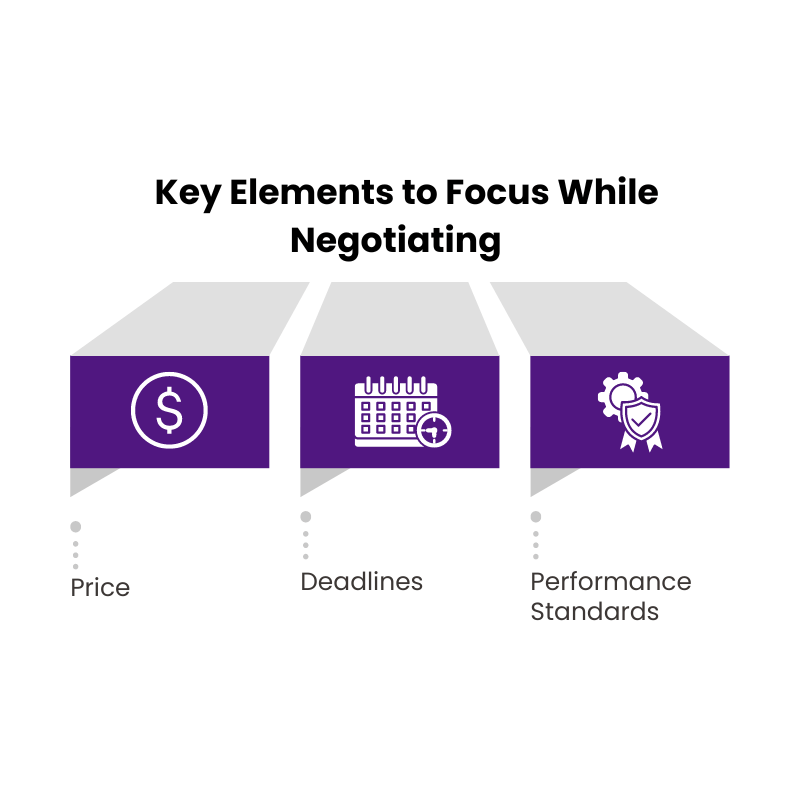Entering the business world can feel like stepping into a bustling marketplace filled with promises and agreements. But without a formal structure to solidify these commitments, things can quickly descend into chaos.
This is where contracts come in, acting as the essential foundation for successful business interactions. This comprehensive guide simplifies contract management for beginners.
We’ll equip you with the knowledge to navigate contractual landscapes with confidence, ensuring clarity, safeguarding interests, and fostering trust between you and your business partners.
With an understanding of the contract management fundamentals and key stages, you’ll be well on your way to forming secure and successful business collaborations.
Part 1: Contracts
This first part of the article explores the significance of contracts in business, equipping you with the knowledge to confidently navigate contractual landscapes. So, without much ado, let’s dive in!
Why Contracts Matter in Business
Imagine a bustling marketplace – agreements are made, promises exchanged. But without a formal structure to enforce these commitments, chaos can ensue. This is precisely why contracts matter.
They act as the written constitution of a business relationship, ensuring clarity, accountability, and a framework for dispute resolution.
Understanding the Power of Contracts
- Clarity and Alignment: Contracts eliminate ambiguity by clearly outlining the scope of work, deliverables, timelines, and responsibilities. This fosters a shared understanding and minimizes the risk of misunderstandings.
- Risk Management: Contracts act as a safety net, mitigating potential issues. By establishing clear conditions for termination, breach of contract clauses, and dispute resolution procedures, unforeseen circumstances can be addressed more effectively.
- Building Trust: A well-crafted contract demonstrates professionalism and a commitment to upholding one’s end of the bargain. This fosters trust and strengthens relationships with clients, vendors, and employees.
Common Types of Business Contracts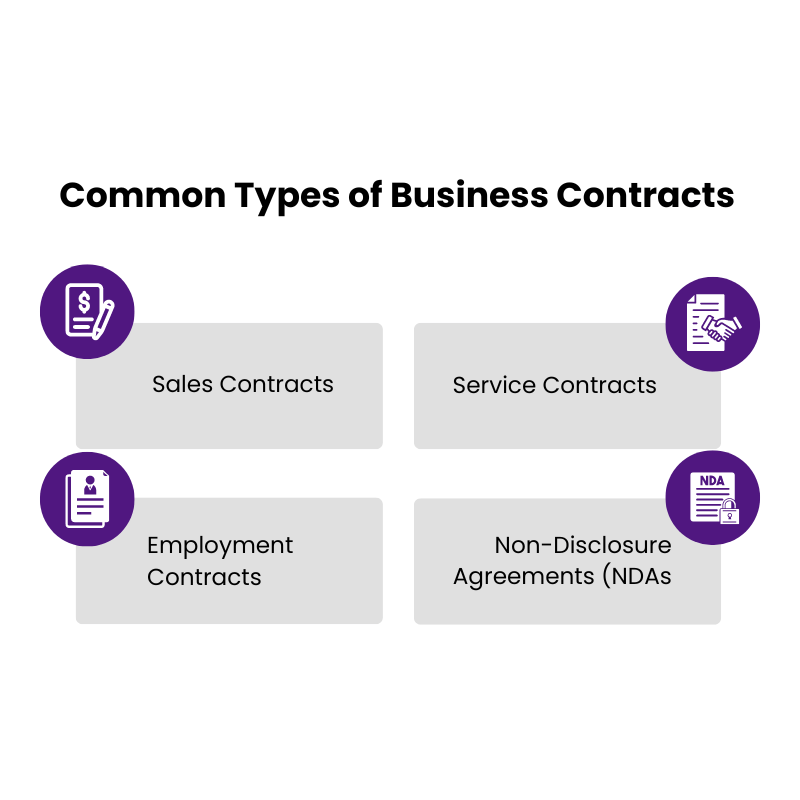
The business world thrives on diverse interactions, each requiring its own contractual framework. Here’s a glimpse into some of the most frequently encountered contracts:
- Sales Contracts: Governing the sale of goods or services, these define the product/service specifications, pricing, delivery terms, and payment schedules.
- Service Contracts: Engaging a consultant, agency, or contractor? Service contracts outline the specific services rendered, timelines, deliverables, and service level agreements (SLAs).
- Employment Contracts: Formalizing the employer-employee relationship, these contracts specify job duties, compensation, benefits, confidentiality obligations, and termination clauses.
- Non-Disclosure Agreements (NDAs): Protecting sensitive information is crucial. Non-disclosure agreements ensure confidentiality of proprietary data exchanged between parties.
Avoiding the Pitfalls of Unwritten Agreements
A handshake and a verbal agreement might seem sufficient initially, but relying solely on these informal arrangements is a recipe for trouble. Here’s why:
- Memory Lapses: Over time, recollections fade. A written contract serves as a clear and indisputable record of the agreed-upon terms.
- Unforeseen Circumstances: Change is inevitable. Contracts provide a framework for addressing unexpected situations that may alter the course of the agreement.
- Legal Standing: Should a dispute arise, an unwritten agreement holds little weight in court. A formal contract offers legal recourse and facilitates enforcement of terms.
By investing time and effort in crafting a well-defined contract, you safeguard your interests and pave the way for a successful and collaborative business relationship.
Demystifying Contract Language
Contracts are often laden with legalese, making them appear intimidating to the uninitiated. However, with a basic understanding of key terms and clauses, you can approach contracts with confidence.
Breaking Down Legal Jargon: Key Terms Explained
- Breach of Contract: Failure to fulfill a contractual obligation by either party.
- Force Majeure: Unforeseen circumstances beyond reasonable control, such as natural disasters, that may impact contractual performance.
- Indemnification: A clause holding one party liable for any losses or damages incurred by the other party.
- Term and Termination: The duration of the contract and the circumstances under which it can be terminated by either party.
Identifying Essential Clauses
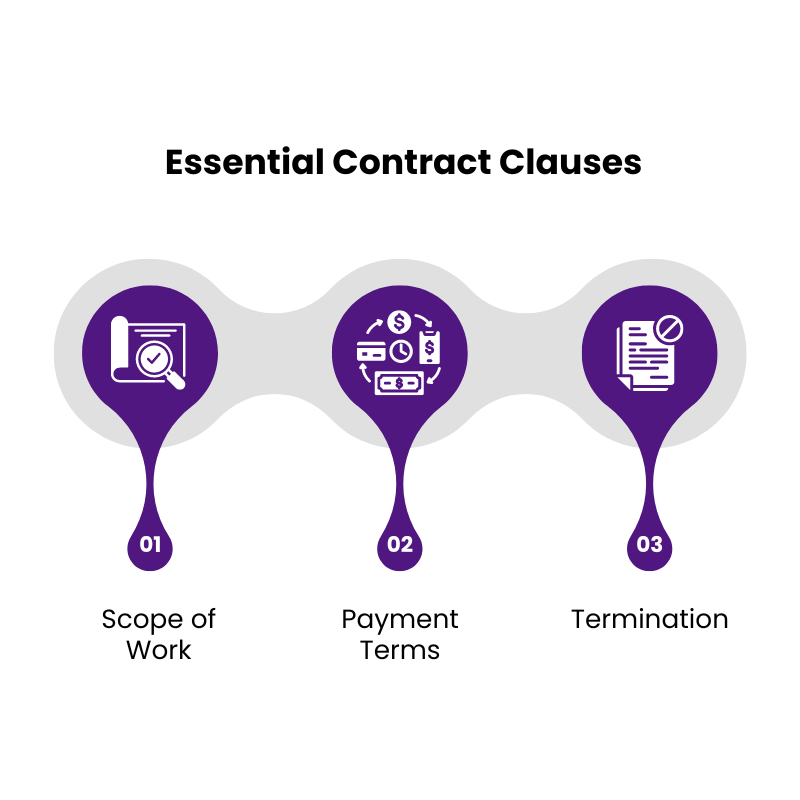
Not all clauses are created equal. Here are some of the most critical elements to pay close attention to:
- Scope of Work: This section clearly defines the services or deliverables expected under the contract.
- Payment Terms: This clause specifies the amount to be paid, payment schedule, and accepted payment methods.
- Termination: Outlining the conditions under which either party can terminate the agreement and the associated consequences.
Learning to Read and Interpret Contractual Obligations
When reviewing a contract, adopt a meticulous approach. Here are some pointers:
- Read Carefully: Don’t skim through the document. Take the time to understand each clause and its implications.
- Ask Questions: Uncertain about a specific term? Don’t hesitate to seek clarification from the other party or a legal professional.
- Negotiate Terms: Contracts are not always one-sided. Feel empowered to negotiate terms that are fair and beneficial to your business.
Part 2: The Contract Lifecycle
The journey of a contract doesn’t begin with a signature, but with a clear understanding of your needs and objectives. This section explores the various stages that make up the contract lifecycle, equipping you to navigate this process effectively.
Initiating the Contract – Defining Your Needs
Before embarking on the contractual journey, it’s crucial to identify your goals and desired outcomes. Here’s how to lay a solid foundation:
Identifying Contractual Objectives – What Do You Want to Achieve?
- Define the Project Scope: Clearly outline the nature of the project, the deliverables expected, and the desired timelines.
- Specify Success Metrics: Establish how you’ll measure the success of the agreement. Is it on-time delivery, cost efficiency, or achieving specific performance benchmarks?
- Risk Assessment: Identify potential risks associated with the project and consider mitigation strategies.
Gathering Information and Setting Expectations
- Research the Counterparty: Gather information about the other party’s experience, reputation, and past performance.
- Internal Communication: Ensure all relevant stakeholders within your organization are aligned on project goals and expectations.
Selecting the Right Counterparty
 Choosing the right partner is paramount. Consider factors like:
Choosing the right partner is paramount. Consider factors like:
- Expertise and Experience: Does the counterparty possess the skills and resources to deliver on their commitments?
- Track Record: Evaluate their history of successful project execution.
- Alignment of Values: Are your company’s values compatible with those of the other party?
By meticulously defining your needs and selecting the right partner, you set the stage for a successful contractual relationship.
Negotiating Your Terms – Striking a Fair Deal
Negotiation is an art form, but with the right approach, you can secure a contract that benefits all parties involved.
Understanding Negotiation Strategies – Win-Win or Bust?
There are various negotiation styles, but a collaborative approach that seeks a “win-win” outcome is often most effective. This fosters a spirit of cooperation and strengthens the long-term relationship.
Negotiating Key Clauses
During negotiations, focus on the following key elements:
- Price: Negotiate a fair price that reflects the value being delivered. Consider factors like market rates and project complexity.
- Deadlines: Establish realistic and achievable timelines for project completion.
- Performance Standards: Define clear performance metrics to ensure the delivered product or service meets your expectations.
Effective Communication and Reaching Agreement
Effective communication is key to successful negotiation. Here are some tips:
- Clearly Communicate Your Needs: Articulate your requirements and desired outcomes persuasively.
- Be Open to Compromise: Negotiation is a two-way street. Be prepared to make reasonable concessions while upholding your core interests.
- Focus on Building Rapport: Maintain a respectful and professional tone throughout the negotiation process.
By employing effective communication strategies, you can reach an agreement that is fair and beneficial to both parties.
[Related Post: Mastering Contract Negotiation]
Drafting and Finalizing the Contract
With a negotiated agreement in place, it’s time to translate those terms into a formal contract.
Key Elements of a Well-Drafted Contract
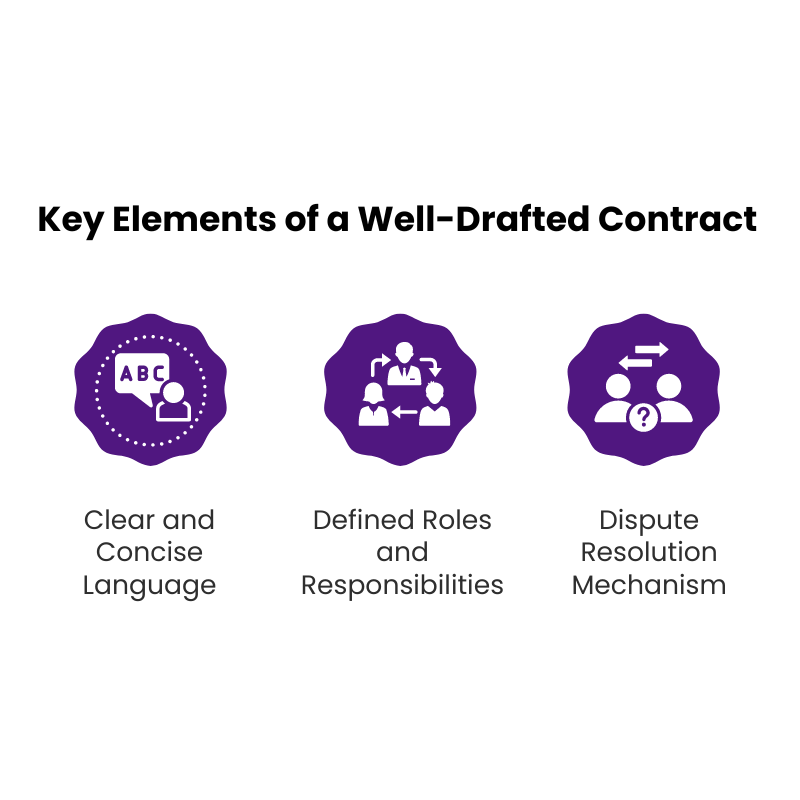
- Clear and Concise Language: The contract should be written in plain, understandable language, avoiding legalese whenever possible.
- Defined Roles and Responsibilities: Clearly outline the roles and responsibilities of each party involved in the agreement.
- Dispute Resolution Mechanism: Establish a process for resolving any disputes that may arise during the project’s execution.
Utilizing Standard Templates or Seeking Legal Counsel
For simpler agreements, utilizing standard templates can be a time-saving option.
However, for complex contracts, seeking legal counsel is highly recommended to ensure all necessary clauses are included and the language is legally sound.
Finalizing the Contract- Signatures, Approvals, and Recordkeeping
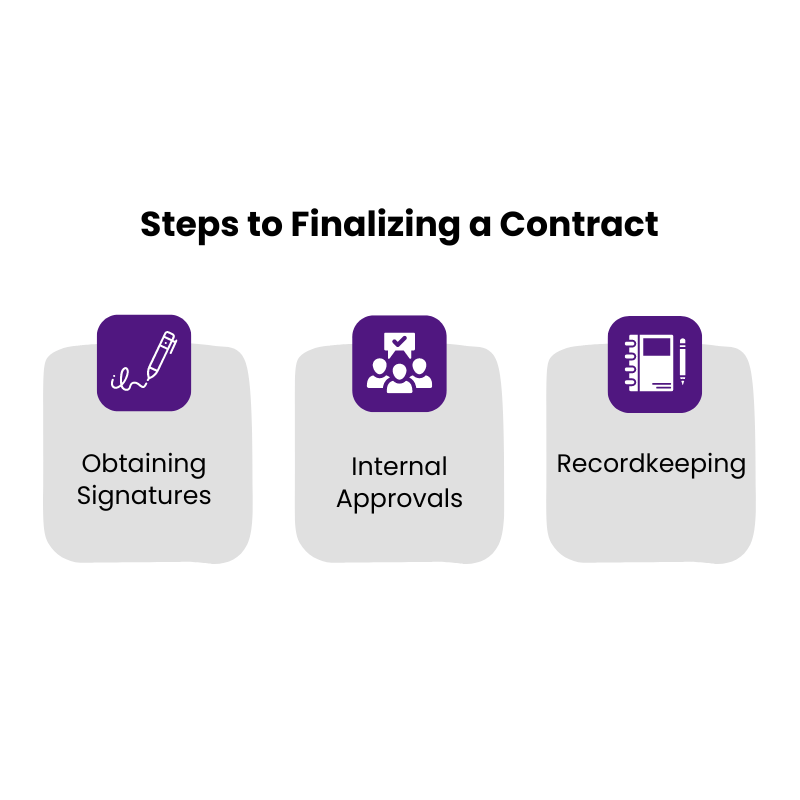
Once the contract is drafted and reviewed by all parties, it’s time for finalization. This includes:
- Obtaining Signatures: All authorized representatives must sign the final contract.
- Internal Approvals: Ensure all necessary internal approvals are secured within your organization.
- Recordkeeping: Maintain a secure and organized system for storing and archiving your contracts.
Part 3: Managing Contracts
A signed contract isn’t the finish line; it marks the beginning of successful contract administration. This section dives into the ongoing tasks required to ensure your contracts deliver the expected value.
Monitoring Contract Performance – Tracking Progress
Effective contract management is proactive. Here’s how to stay on top of your agreements:
Establishing Performance Metrics and Milestones
Define key performance indicators (KPIs) to gauge progress and identify potential issues early on. Set clear milestones throughout the project lifecycle to track deliverables and ensure the project stays on schedule.
Utilizing Contract Management Tools and Systems
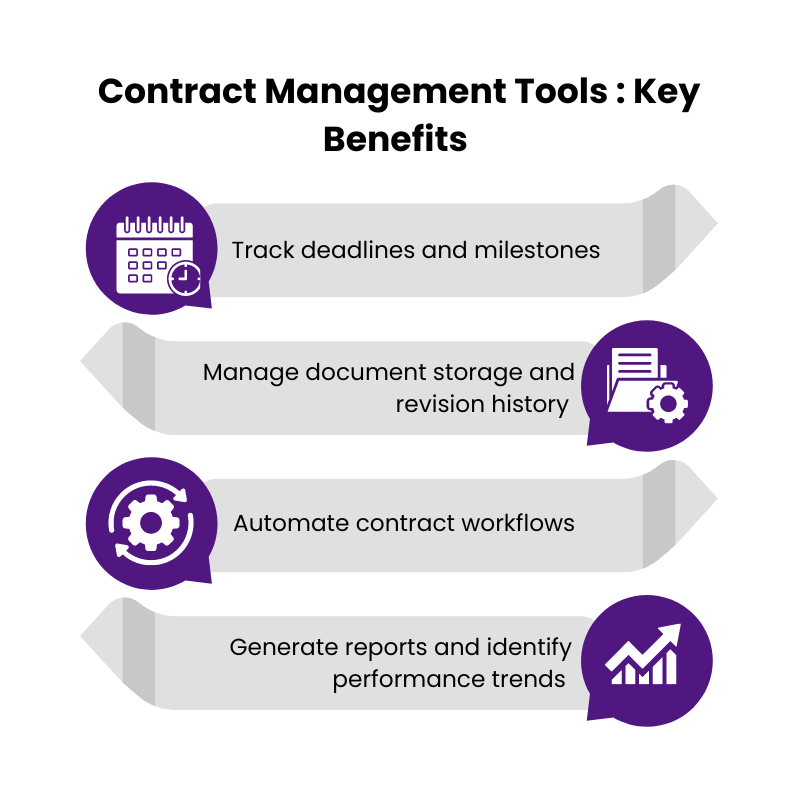
Contract management software streamlines the process. These tools can help you:
- Track deadlines and milestones
- Manage document storage and revision history
- Automate contract workflows
- Generate reports and identify performance trends
Communication and Collaboration with Counterparties
Maintain open communication channels with your counterparty. Schedule regular meetings to discuss progress, address any concerns, and foster a collaborative working environment.
Addressing Contract Issues – When Things Go Wrong
Even the most meticulously crafted contracts can encounter unforeseen challenges. Here’s how to navigate such situations:
Identifying Potential Breaches of Contract
Be vigilant in monitoring for potential breaches, such as missed deadlines, non-delivery of promised services, or failure to meet performance standards.
Your Options: Renegotiation, Dispute Resolution, or Legal Action
Depending on the severity of the breach, you may choose to:
- Renegotiate Terms: If the issue is minor, renegotiation might be a viable option to reach an amicable solution.
- Dispute Resolution: Many contracts include alternative dispute resolution (ADR) clauses, such as mediation or arbitration, to resolve disagreements without resorting to litigation.
- Legal Action: In cases of significant breaches, legal action may be necessary to enforce your contractual rights.
[Related Post: Resolving Breach of Contracts]
Strategies for Mitigating Contract Risks and Avoiding Disputes
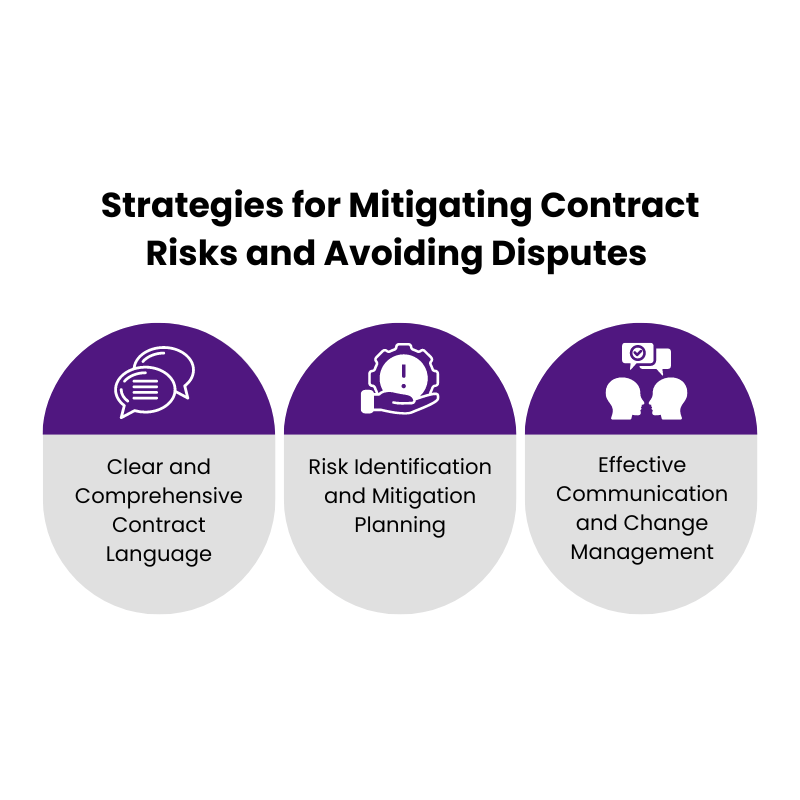
- Clear and Comprehensive Contract Language: A well-drafted contract with clear expectations minimizes the risk of misinterpretations and disputes.
- Risk Identification and Mitigation Planning: Proactively identify potential risks during the contract initiation stage and develop contingency plans to address them.
- Effective Communication and Change Management: Maintain open communication with your counterparty and establish a clear process for managing any changes to the agreed-upon terms.
By implementing these strategies, you can minimize the likelihood of disputes and ensure a smoother contract management experience.
Managing Contract Renewals and Terminations
Contracts don’t last forever. Here’s how to handle approaching renewals and terminations:
Reviewing Upcoming Contract Expiries – Renewal Decisions
- Proactively review upcoming contract expirations to determine if renewal is necessary or beneficial.
- Evaluate the counterparty’s performance and market conditions before making a renewal decision.
Negotiating Contract Extensions and Amendments
- If opting for renewal, negotiate any necessary changes to the original terms, such as pricing adjustments or revised service levels.
- Clearly document any amendments in a signed contract amendment document.
Proper Termination Procedures and Notice Periods
- Some contracts have specific termination clauses outlining the process and required notice periods.
- Follow these procedures meticulously to avoid potential legal repercussions.
Leveraging Technology for Efficient Contract Management
The world of contracts can quickly become a paper jungle, filled with endless revisions, approvals, and mountains of paperwork. Thankfully, technology has come to the rescue!
In this chapter, we’ll explore how contract management software can streamline the process, saving you time, money, and frustration.
Exploring Contract Management Software Solutions
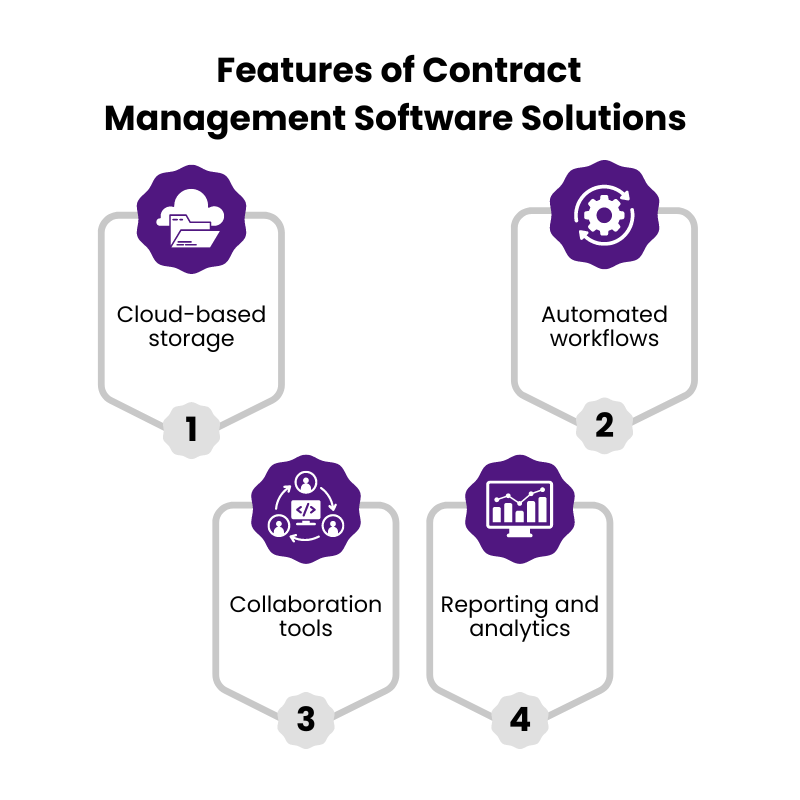
Imagine a centralized hub for all your contracts. Contract management software offers just that, allowing you to store, track, and manage agreements electronically. These solutions offer a multitude of features, including:
- Cloud-based storage: Securely store all your contracts in a central location, accessible from anywhere with an internet connection.
- Automated workflows: Streamline contract lifecycle management with automated routing for approvals, reminders for upcoming renewals, and alerts for potential issues.
- Collaboration tools: Facilitate easy collaboration with internal and external parties on contract drafting and negotiation.
- Reporting and analytics: Gain valuable insights into contract performance with comprehensive reporting tools.
Automating Tasks and Streamlining Processes
Contract management software can automate many time-consuming tasks, freeing you to focus on more strategic initiatives. Here are some examples:
- Automated reminders: Never miss a deadline again with automated reminders for contract renewals, expirations, and upcoming performance reviews.
- Automated routing for approvals: Eliminate the back-and-forth of getting contracts signed by internal stakeholders. The software can automatically route the document for approvals based on pre-defined workflows.
- E-signatures: Ditch the printer and scanner! E-signatures allow all parties to sign contracts electronically, saving time and paper.
Utilizing E-Signatures and Electronic Document Management
E-signatures are a game-changer in the world of contracts. They offer a secure and legal way to get contracts signed electronically, eliminating the need for physical signatures and overnight deliveries.
Additionally, electronic document management (EDM) systems allow you to store all your contract documents electronically, improving organization and searchability.
Best Practices for Different Contract Types
Not all contracts are created equal. This chapter dives into the specific considerations for different types of contracts, ensuring you approach each agreement with the right strategy.
Understanding Specific Clauses for Service Contracts, Leases, Non-Disclosure Agreements
- Service Contracts: Clearly define the scope of work, including deliverables, timelines, and performance metrics. Ensure proper payment terms are outlined and consider including termination clauses for unsatisfactory performance.
- Leases: Whether you’re leasing equipment, office space, or a vehicle, understanding key clauses like rental rates, maintenance responsibilities, and termination options is crucial.
- Non-Disclosure Agreements (NDAs): Protect confidential information with clear language outlining what information is considered confidential, the duration of the agreement, and any exceptions.
Tailoring Your Approach to Different Business Scenarios
The way you approach a contract will vary depending on the business scenario. Here are some additional considerations:
- Negotiation Strategy: Depending on your bargaining power and the importance of the deal, you may need to adopt a more assertive or collaborative negotiation style.
- Risk Management: Identify potential risks associated with the contract and incorporate mitigation strategies within the agreement.
- Long-Term Relationships: For ongoing partnerships, consider crafting a framework agreement that outlines the general terms and conditions for future contracts, streamlining the process for future collaborations.
Legal Considerations for Complex Contracts
While the fundamentals of contract management apply to most agreements, complex contracts may require additional legal expertise.
Consulting with a Business Lawyer When Necessary
Don’t hesitate to seek legal counsel when dealing with intricate contracts, particularly those involving significant financial investments, intellectual property rights, or complex regulatory environments.
A business lawyer can:
- Review and revise contract language to ensure it aligns with your interests and protects you from potential liabilities.
- Negotiate key clauses and ensure the agreement adheres to relevant laws and regulations.
- Advise you on potential risks and suggest mitigation strategies.
Understanding Contractual Liability and Risk Management
Contracts can have legal ramifications for both parties. Here’s what you need to understand:
- Contractual Liability: Your obligations and potential consequences for breaching the terms of the contract.
- Risk Management: Identifying potential risks associated with the contract and incorporating strategies to minimize their impact. This could involve clauses addressing performance guarantees, limitations of liability, and dispute resolution procedures.
By mastering the contract management basics outlined in this article, you’ll be equipped to navigate the entire contract lifecycle – from identifying your needs and negotiating terms to monitoring performance and ensuring smooth renewals or terminations.
Remember, a well-managed contract safeguards your interests, fosters trust with your partners, and paves the way for long-term business success.


